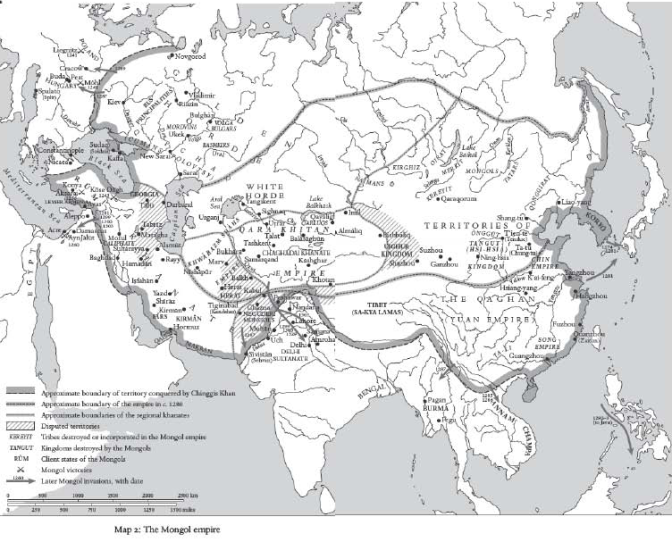The Chinese Voyages of the Ming Dynasty
A
comparison of Arab and Chinese narratives of their respective
explorations and commercial use of the Indian Ocean system in the 15th century
suggests how the system was evolving and the relative amount of state
support or lack of it. For the Chinese mercantile voyages of the period
of Zheng He (1371-1433), the great admiral and explorer of Ming China,
it seems there was direct or subsidized state support for the enormous
cost of his large fleets (Klinje, 2014) (Huan, 1970).
Thus
at Calcutta and other east Indian ports, the chronicles of Ma Huan
records that the fleets of Zheng He were assayed in great detail for
their valuable silk cargoes with exact negotiations over individual
pieces (Huan, 1970, p. 140). In response to this expansive Chinese
commercial and maritime presence there was an accompanying level of
local bureaucratic customs and registration.
| Map of the Fourth Voyage: Source: Brittanica http://media.web.britannica.com/eb-media/20/144620-004-60652ABF.gif |
In contrast, the famous late 15th century
navigational manuals of Ibn Majid, the Arab navigator from the Arab
Gulf, show little indication of any state development or support that
would fit with the definitions of mercantilism. The practices of the
Western Indian Ocean and Arabian Seas may have varied greatly according
to individual ports and the power of a local sultan or ruler. This may
explain the persistence of the localized forms of navigation and more
decentralized ownership of boats and fleets found in the Arabian Seas
that were variously ruined or sustained during the pre-oil economy up
into the 20th century. The merchant ships and smaller fleets
of the Arabian Seas had little bureaucracy to answer to, as did the
successors of Zheng He in the middle of the 15th century when
the Ming Dynasty called its merchant fleets back. Nevertheless we find
in both the Chinese and Arab chronicles evidence that standard weights
and measures in steelyards were used at ports in Yemen and in
Calcutta (Huan, 1970, p. 142).
The following links and resources are available:
For Chinese sources go this Chinese language page. http://proj.ncku.edu.tw/chengho/
The following links and resources are available:
For Chinese sources go this Chinese language page. http://proj.ncku.edu.tw/chengho/

No comments:
Post a Comment